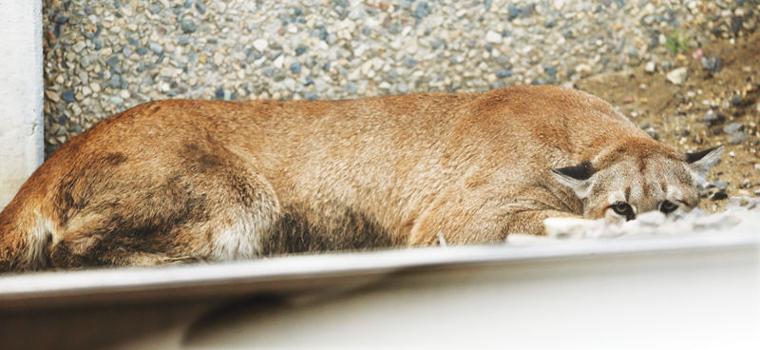Mountain Lion
Wildlife officials have noted a boom in the Oregon cougar population. Officials estimate there are around 6,000 cougars currently roaming the state.
Posted: Sunday, January 11, 2015
Local wildlife
managers aren’t confident a statewide increase in cougar tags will do
much to slow cat populations in Klamath County.John Muir, an Oregon Department of Fish and Wildlife (ODFW) assistant district wildlife biologist in Klamath County, said cougar populations have increased in recent years because wildlife managers have no effective means of managing the big cats, also called mountain lions.
He said cougar populations have yet to hit the maximum number the landscape can support.
Wildlife officials believe there are some 6,000 cats roaming the state, more than double what management objectives call for. “There are probably more cougars on the landscape now than at any other time in history,” Muir said.
It’s likely the 6,000 estimate is conservative, he added. “We recognize that it’s absolutely a minimum population estimate,” Muir said. “It’s probably a vast underestimate.” As a result, on Jan. 1 ODFW officials boosted statewide cougar hunting quotas from 777 to 970, a nearly 25 percent jump.
About 1,000 cats nearby
Muir said Klamath County falls
into two zones: Zone B, Southwest Cascade, and Zone C, Southeast
Cascade. The current population estimate for the Southeast Cascade Zone
is 922 cougars. The current estimate for southwest is 1,500 to 2,000
cats.
He said most of Klamath County is
in Zone C; only a sliver of land next to the Jackson County border is
included in the densely populated Southwest Cascade zone.
“Klamath County is a very small portion of that zone,” Muir said.
Muir said after voters approved Measure 18 in 1994, cougars could no longer be hunted with dogs.
“It’s certainly possible to hunt cougars without hounds, but it’s not very effective,” he said.
According to Klamath County
Trapper Chuck Cleland, conflicts, such as clashes with livestock, have
remained steady over the past few years.
“Ever since Measure 18 got passed, there’s been a heck of a rise in conflicts,” Cleland said.
Along with the increase in the
cougar population, Muir said officials have seen a substantial increase
in all manner of complaints: public safety, livestock damage and an
increase in non-hunting mortality, like vehicle mortality.
Cleland said the best thing
people, especially those living in the city, can do to avoid conflicts
with cats is avoid feeding deer.
“If there’s deer around, that’s
going to pull the cats in,” Cleland said. “I’ve had cases where they’ve
killed deer right in people’s backyards.”
In 2013, he said 15 cougars were
killed by hunters, and six were killed by other means in Klamath County.
The quota that year was 65.
“It gives you a feeling of how
far away from the quota we really are,” Muir said. “From a biological
perspective, we’re not even putting a dent in the cougar population with
our current harvest.”
Muir said quotas were established
in 2006, during the latest cougar management plan revisions, to
maintain a zero growth rate in the cougar population. Instead, the
population has steadily increased.
He said cougars are solitary and secretive by nature, making them hard to hunt, explaining,
“They are an ambush predator so they don’t tend to wander out where you can see them.”
“Cougar season is 365 days a year
— tags are cheap,” Muir said. “I would encourage everyone who hunts to
have one in their pocket.”
source
source

No comments:
Post a Comment